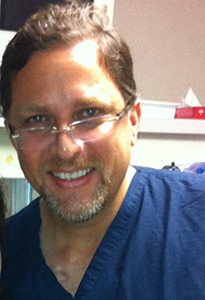Fast Track IVF as reviewed after the ASRM meeting last year by Damian McNamara
Although many physicians first recommend superovulation treatment in a stepwise approach to infertility, a study has shown that immediate in vitro fertilization yields significantly higher pregnancy and live birth rates for couples trying to conceive when the woman is aged 38-43 years.
“Older women have special considerations, including a limited window of opportunity for becoming pregnant,” Dr. Richard H. Reindollar said at the meeting.”
“My recommendation would be when couples come in after 6 months of trying to conceive that they be shown this as an option. If money is not a factor, IVF is the most effective strategy,” said Dr. Reindollar, chair of the department of obstetrics and gynecology, Dartmouth-Hitchcock Medical Center, Lebanon, N.H.
To determine the optimal strategy, researchers randomized 154 older women with unexplained infertility to clomiphene, follicle-stimulating hormone (FSH), or immediate in vitro fertilization (IVF). Participants assigned to clomiphene received 100 mg for 5 days and one intrauterine insemination (IUI) for two cycles. Those in the FSH group received 225 IU for 5 days plus one IUI for two cycles. The rest underwent immediate IVF.
All women were part of couples who had tried to conceive unsuccessfully for at least 6 months.
The primary aim was to compare the effectiveness of these strategies after two treatment cycles. After two cycles, 51 couples underwent a total of 87 clomiphene/IUI cycles; 52 couples underwent 91 FSH/IUI cycles; and 51 couples had 85 immediate IVF cycles.
Immediate IVF is the most effective treatment for couples when the female partner is at the end of her reproductive years, Dr. Reindollar said when presenting these preliminary results of the Forty and Over Infertility Treatment Trial (FORT-T). Cost analysis of the data is planned for the future.
Per cycle, 7% of the women in the clomiphene/IUI group had a clinically recognized pregnancy, compared with 8% in the FSH/IUI arm and 25% in the IVF group.
When the two fertility treatment groups were combined, the live birth rate was 5% (9 of 178 treatment cycles), compared with 15% for women in the IVF group (13 of the 85 treatment cycles).
“The use of FSH/IUI has come under scrutiny in the past few years,” Dr. Reindollar said. Pregnancy rates below 10% and a high rate of multiple births, including triplets and quadruplets, are among the criticisms.
He conducted a previous randomized trial of women younger than 40 years with unexplained infertility (Fertil. Steril. 2010;94:888-99). Dr. Reindollar and his colleagues determined that FSH/IUI provides no added value to a regimen of three cycles of clomiphene and up to six cycles of IVF in terms of cost-effectiveness and time for a pregnancy to lead to a live birth.
For the current study, determination of the overall effectiveness of the three treatment strategies, even beyond the first two cycles, was a secondary aim. After the first two cycles, all couples underwent four cycles of IVF. Follow-up of these couples ended Sept. 15, 2011. Overall, by study end, 46% of the women had achieved pregnancy (71 of the 154 participants).
“There was some catch-up in the clomiphene and FSH arms by the end of the trial,” Dr. Reindollar said. However, despite this catch-up in pregnancy rates, 70% of live births were achieved through IVF. “Beginning treatment with immediate IVF, compared with initial treatments of superovulation and IUI, results in [a] significantly higher number of live-born infants.”
Dr. Reindollar said he plans a future cost analysis of the data and will look at whether any significant differences emerge when patients are stratified by age (38-41 years vs. 42-43 years).
All the women in the study were fertility-treatment naive and had a normal clomiphene challenge test. In addition, participants had no pelvic pathology, had an acceptable ovarian reserve, and reported regular menstrual cycles. The male partners had normal semen analysis findings.
The groups did not differ significantly by demographics. The mean age of women was 40 years in the clomiphene and IVF groups and 41 in the FSH group. Approximately one in five in each group was older than 41 years. The majority of each group reported no prior deliveries: 67% of the clomiphene patients, 79% of the FSH patients, and 69% of IVF patients. In addition, more than 75% of participants were white and more than 80% had a history of oral contraceptive use.
From the Annual Meeting of the American Society for Reproductive Medicine



